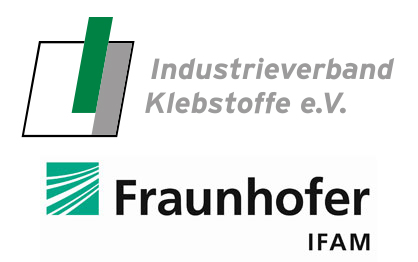5.3 Cleaning and degreasing
Removal of dirt/contamination from the surface
Cleaning agents:
Depending on the substrate, various cleaning agents can be used (organic or aqueous cleaning agents). However, these must be suitable for cleaning prior to adhesive bonding. The adhesive manufacturer can provide information about suitable cleaning agents.
It is advised not to use standard industrial (or household!) cleaning agents because these often do not have the required purity for adhesive bonding applications and in unfavourable cases can contaminate the substrate surface.
General requirements regarding cleaning agents:
- Should ideally remove all contaminants
- Must evaporate quickly and must not leave any residues
- Must not attack the substrate (e. g. must not initiate corrosion on metals or stress cracking in plastics)
- Must comply with the regulations and guidelines relating to health and safety at work and environmental protection
Procedure (cleaning and degreasing):
- Manually by wiping, immersion baths with and without brushing, ultrasonic bath or vapour degreasing (for fine-cleaning).
- In general, cleaning in immersion baths is preferred to cleaning with cloths soaked with cleaning agents.
- If there is no possibility of cleaning the substrates in an immersion bath then white, disposable, fluff-free cloths made of cellulose material should be used. These must only be used once.
- The cleaning process must be continued until dirt is no longer visible on the white cellulose cloth.
- Wiping must always only be carried out in one direction
- (→ Procedure: Wipe from top to bottom and from left to right).
- All tools that are used and any compressed air for blowing the surface must be oil-free, fluff-free and dry.
Points to heed:
- Use a suitable (and pure) cleaning agent
- Use fluff-free cleaning cloths
- Only use cleaning cloths once
- Continue the procedure until the cleaning cloth remains white
- Tools and compressed air must be oil-free, fluff-free and dry
- Cleaning agents must not attack the substrate (corrosion on metals, stress cracking on plastics)
Wiping method:

Cleaning power of different organic solvents
| Contaminant | Hydrocarbons | Alcohols | Ketones, Esters |
|---|---|---|---|
| Cutting oil | 0 | 0 | + |
| Preservation (anti-corrosion) oil | + | 0 | + |
| Waxes | + | 0 | 0 |
| Lubricants | + | 0 | + |
| Resins | + | + | + |
| Adhesives (not cured/hardened) | – | 0 | 0 |
| Fingerprints | – | + | + |
| Silicone oil | – | – | – |
| Release agents | 0 | + | + |
+ easy removal
0 removal in some cases
– difficult removal
Cleaning power of different aqueous cleaning agents
| Aqueous cleaning agents | pH value | Application temperature | Especially suitable for: |
|---|---|---|---|
| Alkaline cleaning agents | 9 – 12 | 60 – 95 °C | Greases, drawing oils, drawing compounds, machining oils |
| Acidic cleaning agents | 1 – 4 | 50 – 80 °C | Hardening oils, drawing soap |
| Neutral cleaning agents | 4 – 10,5 | 30 – 70 °C | Machining oils, emulsions |
After cleaning with aqueous cleaning agents, the surfaces must be very thoroughly rinsed with demineralised water.
The problem of silicones
By selecting a suitable cleaning agent, cleaning method and if necessary repeating the process multiple times for very dirty substrates, it is possible to remove almost all contamination – with one major exception: Silicone contaminants.
It cannot be guaranteed that these can be removed from the surface.
The following hence applies:
Silicone contamination must be avoided!
It must thus be ensured that no contamination with silicone or silicone oils occurs during storage of the substrates, during surface treatment or during the bonding process.
Sources of silicone contamination:
- Cosmetics: Hand and face cream, lipstick, shampoo, hair gel, conditioner
- Rubber gloves with silicone as lubricant
- New clothing (until having been washed a number of times), textile fabrics
- Lubricants for machinery and bearings (silicone oil)
- Products for cleaning furniture and paint care products, impregnating agents, cockpit spray
- Parting agents for moulds (release agents)
- Silicone adhesives
- Anti-foaming agents
- Medicines and medical products
- Silicone oils
- Silicone sprays
- Example names of silicone additives: dimeticone, cyclometicone, phenyltrimethicone, amodimethicone, silicone



